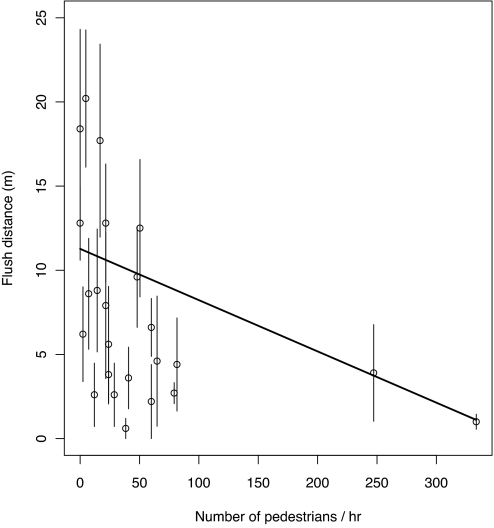Fig. 2.
Distance from approaching intruder at which incubating mockingbirds flushed from their nest as a function of number of pedestrians per hour that pass within 5 m of the nest (slope = −0.4; t22 = −2.2; P = 0.036). Points show average flush distance (± SEM) for each incubating bird over the 5 days of the experiment. The fitted line represents the effect of pedestrians on the flush distance on the third day of the experiment. The negative relationship remains significant if the 2 right-most points are removed (slope = −0.1; t20 = −2.7; P = 0.014). Birds nesting near busy sidewalks are more tolerant of humans, yet still respond strongly to repeated visits by the same human (Fig. 1).

